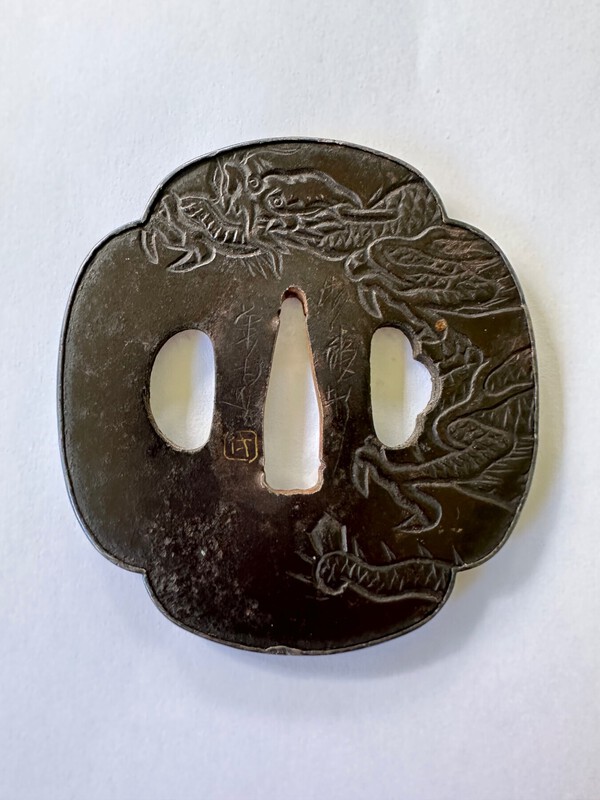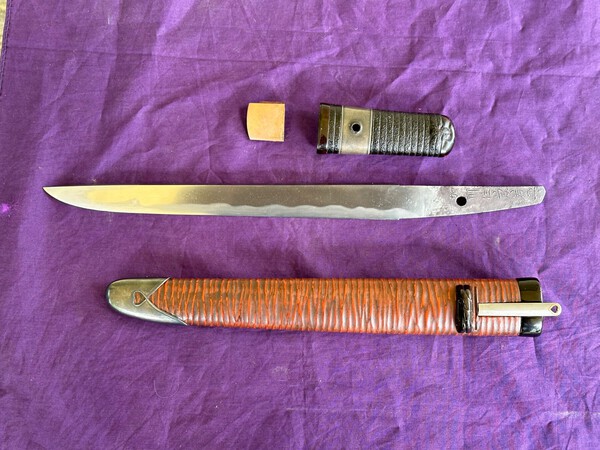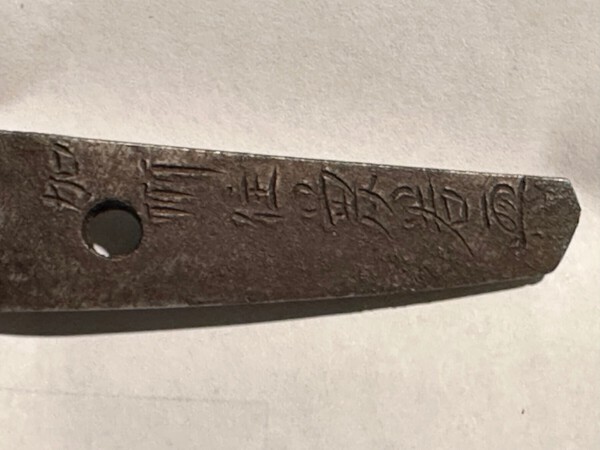
1kinko
Gold Tier-
Posts
826 -
Joined
-
Last visited
-
Days Won
3
Everything posted by 1kinko
-
Probably because clay shrinks and distorts as it dries, particularly flat pieces of clay. Plus not every metal worker had a kiln nearby. I've been using the same patch for about 10 years and while it does get more brittle with constant remelting, it works just fine for holding the metal in place- just requires more pressure to break your piece out.
-
Sale of Japanese Tsuba and Tosogu is a Facebook site with about 1400 members. It’s based in Japan but has an English format.
-
FYI I just read a post by Ritchie Murtha that his father has passed away and that he has found several books/cases of books by Gary that are available for purchase. He listed them on Sale of Japanese Tsuba and Kodogu.
-
The crux of this paper were posted months ago under cast iron tsubas.
-
Uh, several members specifically asked for Ford’s opinion and those who wish to learn, learned something that was not obvious, particularly to non-practitioners of the craft. If you want comments like “ cool”, perhaps the Nihonto Fittings website would be more appropriate for you.
-
Shiro-shibuichi?
-
Oh, I thought the discussion was about cast iron tsuba, but now it’s about “warrior” tsuba huh? But late Edo when you speculate cast iron tsuba were manufactured was not a time of warriors, was it? Furthermore, owning something you think was a warriors tsuba is just speculation, once again. I will confess, having spent about 12 years making tosogu, that I recognize and prefer craftsmanship over crudity.
-
Well I wasn’t speculating about you (unless you only buy tsuba for less than $100) but I would be interested in your experience in carving cast iron, or for that matter mild steel.
-
And the proud buyer of cheap tsuba who’s never handled a tsuba blank or tagane knows nothing at all except how to speculate.
-
IMHO it seems like an attempt to increase the value of inferior tsuba.
-
Yes Dan , you are right ‘
-
Dan blah blah blah. I have an AS, BS, MS, PhD, 3 years in Post-Doc and over 40 peer-reviewed publications. So what? I don’t have 40+ years in Japanese metallurgy or tosogu experience. Neither do you. We’ve already been through your cherry-picked sentences, questionable translations, and your cast iron bottle opener. Still zero evidence of cast iron tsuba from the Edo period that was verified made in Japan. Still waiting for you to show us how your carve cast iron.
-
Swords, tosogu, and kosherae are frequently separated and united with different partners. A cast tsuba on an Edo sword means nothing about the pairing in the Edo period, imho.
-
Cleaning Spider webs & stains
1kinko replied to Bruce Pennington's topic in General Nihonto Related Discussion
You’ll better know more about blades than me, a fittings guy, but that looks like a blister due to polishing over an incomplete weld to me. My 1 1/2 cents. -
Gimei or not, they do seem to have cranked them out. This one is a different shape, but with the same lousy mei and kao.
-
Help on the value of a damaged Katana
1kinko replied to Kyle68's topic in General Nihonto Related Discussion
If there’s no indication of a bullet strike on the saya, what is that thick stuff doing at the kojira end? -
Try Karyo Dumadi on Facebook. He has different sizes of fresh skins of several different skate species and his prices are lower. Send him a picture of what you want.
-
Well, I’m totally impressed, once again NMB members come through. I don’t see any way of identifying this particular smith, but I know at lot more about the school and the nature of signatures. Here’s a pic of the whole blade and kosherae. The bashin and kojira are my work, as both were missing.
-
Thanks! At least now I know this particular kanji simplification was used in the early 1600’s. Still wondering about the final kanji/kao. Any ideas?
-
None of the other signatures from this school (that I have seen) are missing the bottom half. Is this like a short-hand version? And is this a common abbreviation or an indication of more recent changes to kanji to make them easier to write?
-
I really don’t know. Whatever it is it isn’t stamped, it’s carved with the same tagane-style as the rest of the signature. Should this be moved to Nihonto?
-
賀州住兼若 The bottom half of the first kanji is missing on my yore-doshi. There’s an article (The Kashu Kanewaka School) by Anthony Thomas online but no photos. AOI and a few others have pictures of the signatures but none have the final kanji/kao. Thomas reported that there were 3 more generations in the late Edo but no information’s available when Thomas wrote his article.
-
Other signatures by this school have another kanji below the first, in about the area where the mekugi ana sits.
-
Not surprisingly, tsuka length has a lot to do with hand size. From The Art of Tsukamaki by Thomas Buck, 2 hand widths plus 2 fingers for katana, 1.5 habd widths for for wakizashi, and 1 hand width for tanto.
-
This is the signature on a yorai-doshi. Kashu ju Kanewaka- but which one? This one seems to have a kao at the bottom. Has anyone seen this signature before? I’m also mystified by the missing kanji at the top. Any ideas?










